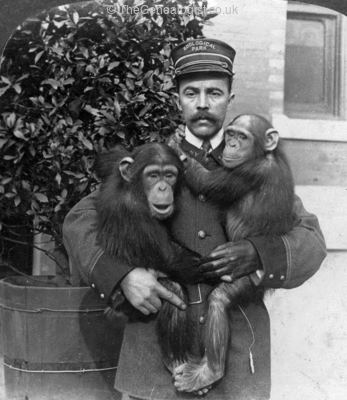 Something that I have always believed in is that family history, as opposed to straight forward genealogy, needs the lives of our ancestors to be put into the social context of the times that they lived in. One of the really powerful ways to do this, I find, is to look at images from the past.
Something that I have always believed in is that family history, as opposed to straight forward genealogy, needs the lives of our ancestors to be put into the social context of the times that they lived in. One of the really powerful ways to do this, I find, is to look at images from the past.
For that reason I am really bowled over with the new addition to TheGenealogist’s website that gives us a taste of what life was like in the times of our ancestors, through the medium of old photographs.
TheGenealogist has become the first family history website to launch a dedicated new Image Archive, which includes hundreds of unique 3D photos and thousands of standard images dating from 1850 to 1940!
What is brilliant is that the new Image Archive is a free to use service that allows researchers the opportunity to relive the past through the eyes of their ancestors at: www.TheGenealogist.co.uk/imagearchive
If you are a Diamond subscriber to TheGenealogist then you will have further access to the Image Archive to download the images in a high resolution format for the greatest possible clarity.
The Image Archive is fully searchable using the title of the photo itself, or you can just add a keyword to narrow down your search as I did to look at St Aubin, a village in Jersey, which is a place that is particularly well known to me. I can recognise buildings that are still there today, such as part of the current Spar shop that was, circa 1900 when the photograph was taken, Beresford’s General Supply Stores.
I then flipped to London and a view of Fleet Street, which I know from a stint working in a travel company based in what was an old newspaper office there.
Then on to Birmingham and to view streets that I can recognise have changed little from the first floor up (Corporation Street, for example) and those that by the time I lived in that city, in the late 1970s and 80s, had been demolished to make way for new schemes. So, by using this website, I could see what the Bull Ring looked like in the past. Then there was Five Ways, that I only know as a huge three lane roundabout, but was an atmospheric setting in the old images on TheGenealogist.
All the photos are rated so you can see which photos are of the highest quality. There is also a selection of main search categories and sub-categories to help you find photos of interest, quickly and easily. They are also rated for quality so you can see how good the picture is before you download it.
Hundreds of the images are available in stunning 3D to really bring the past to life!
With scenes of the hustle and bustle of Market Day to the drama of war, there is a selection to view as both 3D moving images or as 3D Red blue images or in a standard format if you prefer. Digitally enhanced by creative experts at TheGenealogist, add a greater depth to that photo from the past!
Take a look for yourself here.
Disclosure: All links are compensated affiliate links.
 Send to Kindle
Send to Kindle










